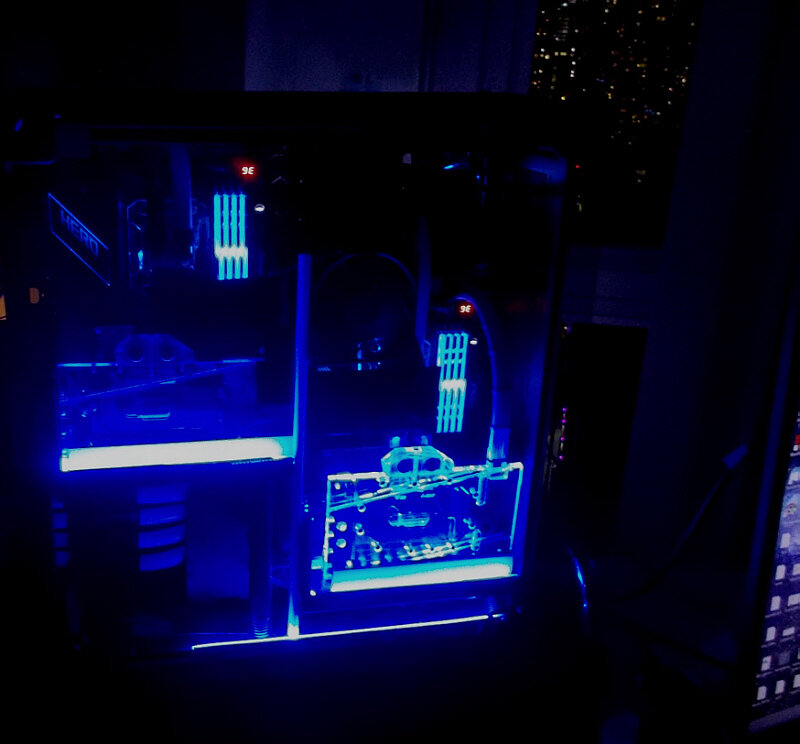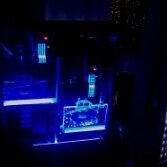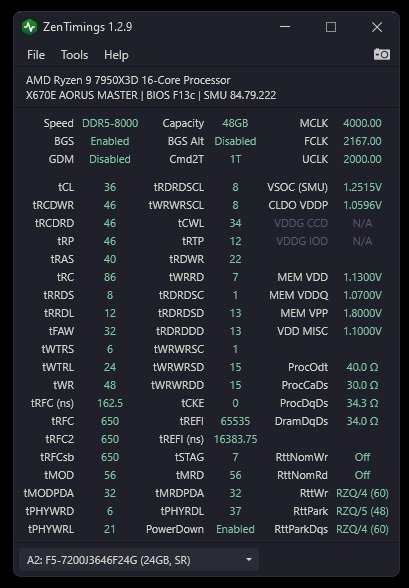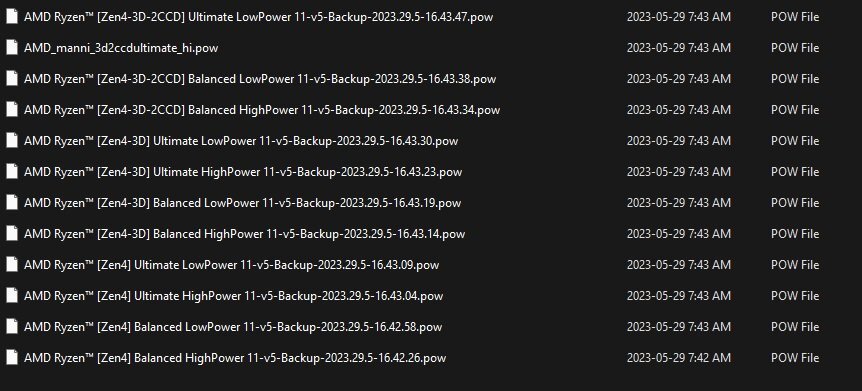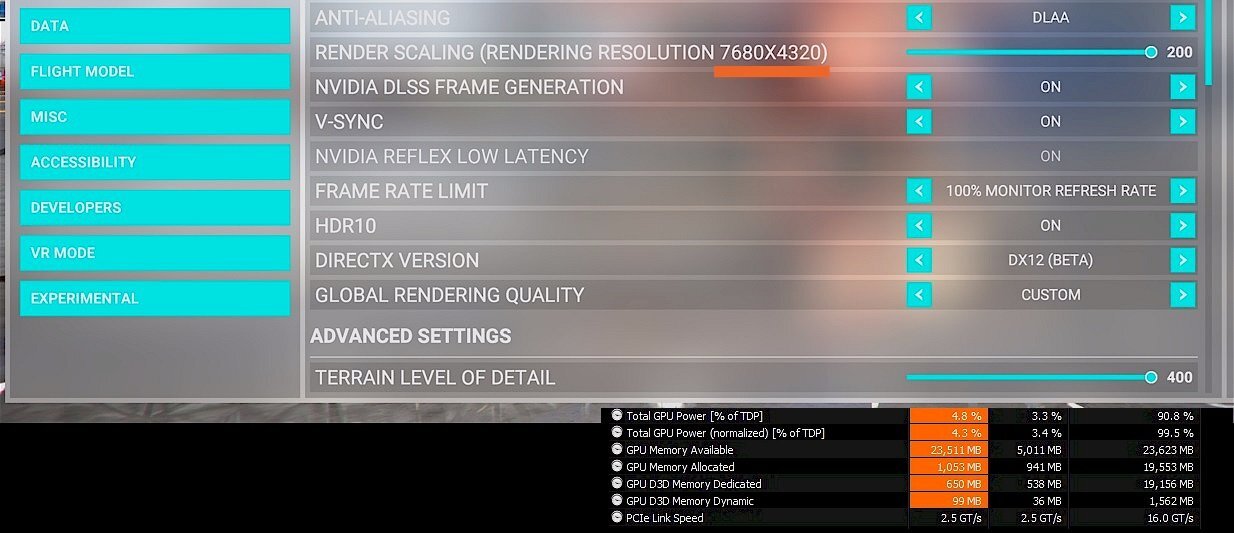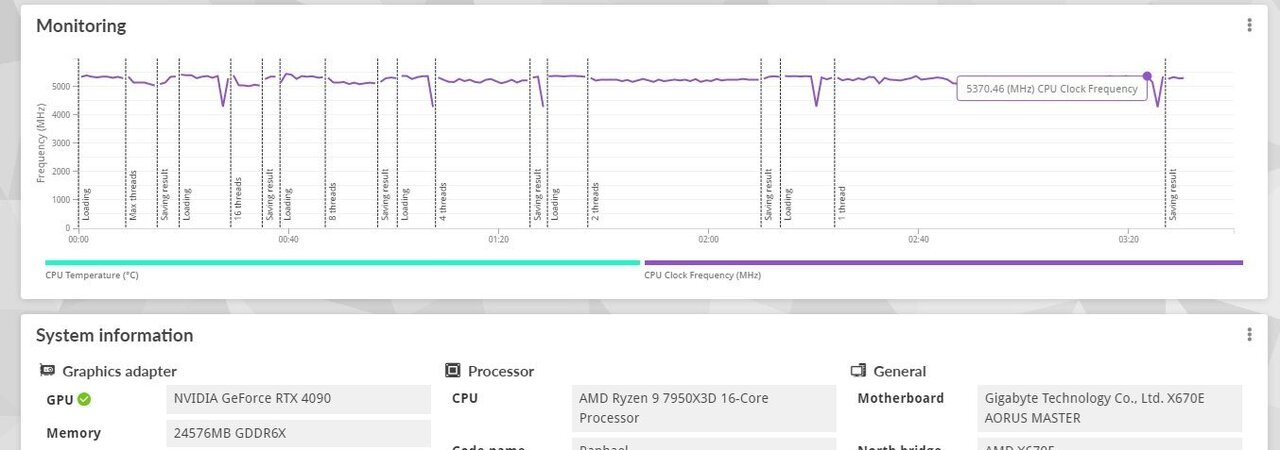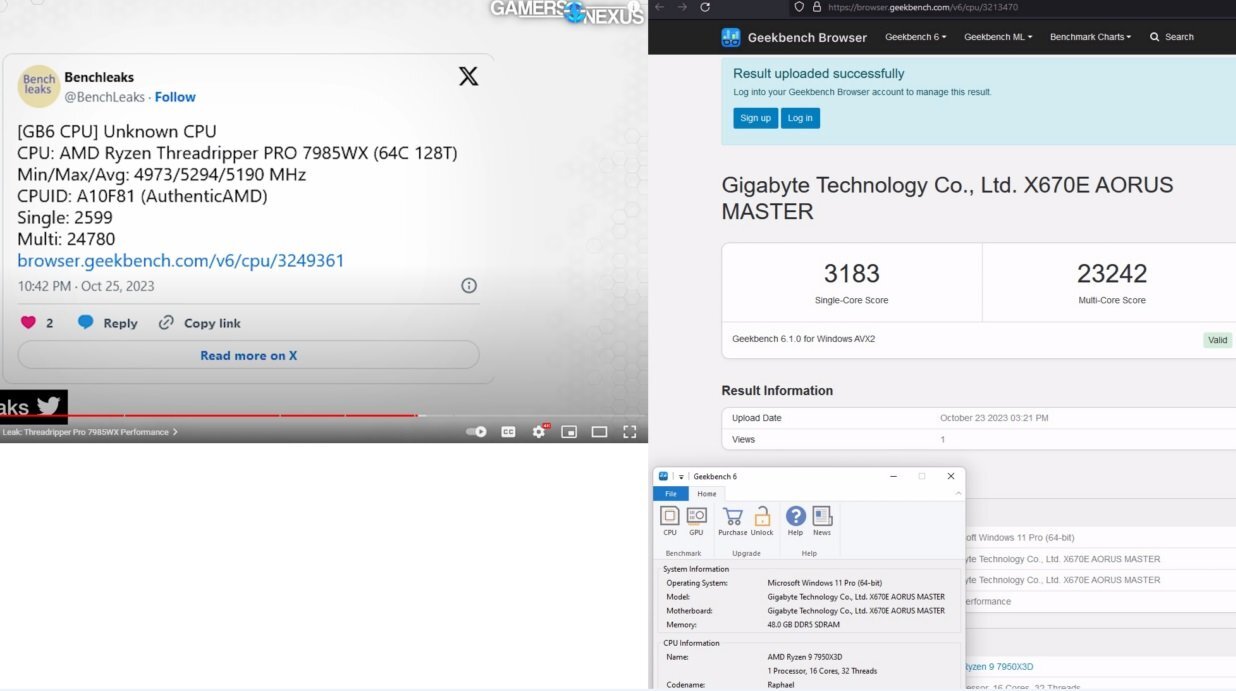Welcome to ExtremeHW
Welcome to ExtremeHW, register to take part in our community, don't worry this is a simple FREE process that requires minimal information for you to signup.
Registered users can:
- Start new topics and reply to others.
- Show off your PC using our Rig Creator feature.
- Subscribe to topics and forums to get updates.
- Get your own profile page to customize.
- Send personal messages to other members.
- Take advantage of site exclusive features.
- Upgrade to Premium to unlock additional sites features.
-
Posts
2,210 -
Joined
-
Last visited
-
Days Won
96 -
Feedback
0%
Content Type
Forums
Store
Events
Gallery
Profiles
Videos
Marketplace
Tutorials
Everything posted by J7SC_Orion
-
I know some folks have experienced and reported on these select lock-up issues, but so far, none of my four AMD Ryzen CPUs have caused me such issues (TR2950X; 3950X; 5950X; 7950X3D). I wonder if it is some sort of combination of mobo, RAM and other bits. Mobos in use for my Ryzen CPUs are MSI, 2x Asus and Aorus. GSkill TridentZ RAM on all my Ryzens BUT all GSkill kits I use are Intel-XMP editions, not AMD EXPO etc.
-
@Hurricane28 ...Gigabyte released a new bios today w/AGESA 1.1.0.0 for the Aorus 670E Master; it is likely that they updated the bios of other mobos as well.
-
I am at work and don't have time to watch this again now, and there were a few different spots, but > here is one of them...makes more sense to watch the whole context, though
-
...undershoot, overshoot and that sort of thing for Ryzen 7K by Buildzoid in this July '23 vid; w/ some comments about PBO and X3D in the latter half
-
I am actually quite happy with F13C on my Giga/Aorus board, but in general Gigabyte 'support' is spotty...
-
...might as well wait for AGESA 1.1.0.0 now @neurotix just Google the board for whatever info you are looking for, noting that with DDR5, it is more than just daisy chain versus t-top - it also comes down to board layers and insulation. In any case, I showed up to 8200 on 2 SR sticks, so it has decent capabilities.
-
On prior AMD boards, this could be due to USB population with earlier bios, but I heave not heard anything re. that on AM5
-
IMO, too much overhead (and also AMD data siphoning). Once installed, it keeps a process open and reported task manager even when you tuned it off and do not have Ryzen Master auto-loading at start. Only uninstalling Ryzen Master will get rid off that extra process in task manager.
-
I just started using that app... I had finished my regular-speed COs the old-fashioned way but now, for additional eclk settings, that app is really handy and also quicker (fewer reboots).
-
I am not sure whether the 'second CCD boosting' issue would be solved by a new mobo. What is more, there is no guarantee that your CPU itself can run 8000 error-free on another board. Honestly, I would either swap my CPU, or more likely wait for the Ryzen 8K series which is already in engineering sample mode.
-
...seem tight to me, but if it works w/o errors than they must be ok. Better ask @kaliz though as most of my experience is with 1:2 ~ 8000
-
I run 8, 8 anyways but Buldzoid edited the subject later by adding "(AMD works differently)" EDIT: Zen for my current daily (non-bench) setting, stress tested. FYI, 7950X3D tend to have higher binned cores and IMC - though it still also comes down to mobo topography and RAM type. In terms of performance, the CL30 6400 1/1 setting gets closest to this one
-
There are a couple of other tools available such as CoreCycler, but I just use Process Lasso which I got back in the TR 2950X days; so I'm used to it.
-
MannyX-ITA (OCN) released several custom versions specific to each Ryzen 7 type...I tried some of them, and they're quite good, with or without core-parking...but again, it also comes down to choosing the right ones, ie. single vs dual CCDs, and also regular CCD Ryzen 7K or the X3D ones. I reverted back to my 'hi-po' regular Win 11 Pro plan for now.
-
This is a 7950X3D, essentially voltage-locked 'upwards' - stork voltages in my earlier post (confirmed by HWInfo)
-
After 'eclk' and stock bclk tuning, I did some more custom bclk and custom CO; single core on CCD0 VCache can now hit 5370...hasn't failed single test yet but I don't want to push the CPU over the edge, either...
-
...wrong thread @bonami2 ...some early Geek6 single / multi-core benchmarks for the new Threadripper Pro 7985WX (64c/128t) on the left. On the right, my best run with the 7950X3D / DDR5 8k. I am sure the 7985WX numbers will improve with final bios and so forth, but the new TR Pros are obviously more geared forwards productivity anyway, including with plenty more PCI lanes.
-
...with a well-cooled 3090, 2200 MHz is possible. My 3090 Strix OC (extensively w-cooled, 3x 8 PCIe, 520 W KingPin vbios) can do a bit more under ideal circumstances.
-
I can certainly understand your frustration... Before RMAing, I would do one more attempt to completely reset everything (ie. battery out, PSU disconnected) because you might be stuck in no-man's land on the bios chip itself. Presumably, the board also has bios flashback - going back to the earlier bios version, if possible. If that doesn't solve it, you probably do want to RMA, but is it the CPU, the mobo or RAM ?


